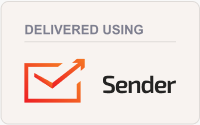What is KVERC?
The Kawuneeche Valley Ecosystem Restoration Collaborative (KVERC) formed in 2020 to focus on ecosystem restoration of the Kawuneeche Valley to support its ecological, economic and community well-being. The Kawuneeche Valley is located where the Colorado River headwaters flow through Rocky Mountain National Park and into Shadow Mountain Reservoir near the town of Grand Lake.
The KVERC member organizations share the goal of a healthy and resilient watershed, occupied by a mix of public and private landowners, which serves diverse ecological, recreational, and economic interests. No one organization can achieve a healthy watershed in this region on its own; the combined resources and expertise of KVERC and its stakeholders can accomplish more through collaboration. KVERC members include:
- Colorado River Water Conservation District
- Colorado State University
- Grand County
- Town of Grand Lake
- The Nature Conservancy
- Northern Colorado Water Conservancy District
- United States Forest Service
- National Park Service
- Rocky Mountain Conservancy
Why does the Kawuneeche Valley need restoration?
The Kawuneeche Valley has experienced a biome shift, from a riparian wetland with seasonal flooding along the river’s banks to a grassland/savannah with incised stream channels and abundant invasive, non-native vegetation. Land uses, predator extirpation and wildlife management in the greater landscape have led to significant changes in vegetation (particularly willows), wildlife (including beaver), and water quality and flow.
Moose and elk browse heavily on willows, substantially reducing willow height and biomass. Without tall willows as food and building material, wildlife such as beavers are now uncommon and the absence of dams prevents the overbank flooding along streams, which is needed to maintain wet meadows and natural cycles, drought resistance, and resiliency to wildfire. Additionally, abandoned irrigation ditches and channel modifications have further de-watered extensive floodplain wetlands.
Planned Projects to Help Restore a Healthy, Willow-Beaver Wetland Environment
Following assessments of the valley, KVERC partners are implementing targeted ecosystem restoration projects and abandoned infrastructure mitigation with the goal of large-scale ecosystem restoration.
Four sites within Rocky Mountain National Park have been identified as highly suitable for restoration. These sites are located along the four major tributaries of the Colorado River within the Kawuneeche Valley (Beaver Creek, Baker Gulch, Bowen Gulch and Onahu Creek). KVERC will implement restoration at the Beaver Creek site in Fall 2023. Projects include:
- Invasive plant removal treatments
- Fencing to protect vegetation
- Vegetation planting
- Process-based restoration (e.g., beaver dam analogs)
- Pre- and post-restoration monitoring
In addition to restoration projects, KVERC is also working on stakeholder and public outreach to garner feedback and support. This work includes creating a new, updated website and other publications to educate the public, landowners, and other stakeholders about its work in the valley and why it is important.
Benefits of Large-Scale Restoration in the Kawuneeche Valley
These potential restoration activities will help with:
- Improving water quality and maintaining healthy water temperatures in the Colorado River
- Accommodating healthier aquatic life and habitat surrounding the river
- Creating natural wildfire lines via renewed overbank flooding
- Strengthening the valley’s overall resilience to drought and climate change
- Enhancing aesthetics and recreational value
For more information about KVERC activities, please visit https://co.grand.co.us/1436/KVERC.
